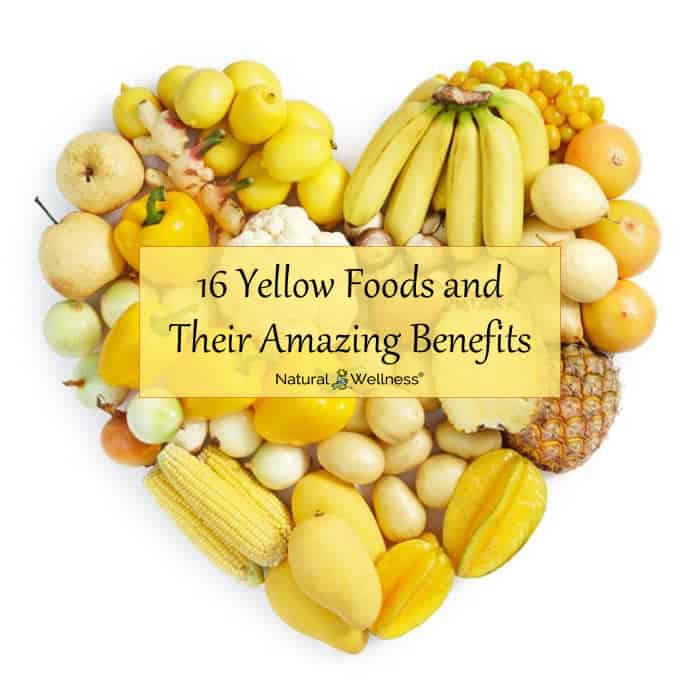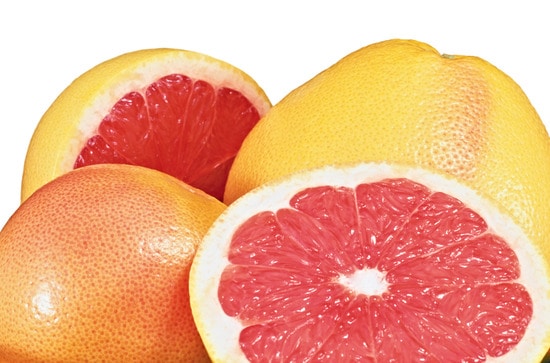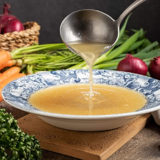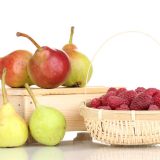

The colors of the rainbow are pleasing to the eye and, when seen on fruits and vegetables, serve to make them more appealing to the appetite as well.
In addition to the promise of gastronomic delight, the bright colors of many foods portend the wealth of nutrition that resides within. Each color, in fact, corresponds to nutrients that have specific health benefits when consumed.
Yellow foods express the abundant presence of these nutrients:
- vitamins A and C
- B vitamins
- alpha and beta carotene
- beta cryptoxanthin
- lutein and zeaxanthin
- magnesium
- phosphorus
- potassium
A List of 16 Yellow Foods and Their Benefits
The yellow foods that contain these nutrients are mostly fruits and vegetables but also include some nuts and whole grains.
A partial list of the most common yellow foods is listed below along with some interesting facts about each of them:

- Grapefruit – This tropical citrus fruit known for its sweet and sour taste is considered one of the best things to add to your breakfast when trying to lose weight due to its high amount of vitamins, fiber, and water.
- Mangoes – This tropical fruit, known to some as “the king of fruit” is loaded with plant compounds, known as polyphenols, which can aid in improving your hair and skin quality.
- Papaya – This Central American fruit contains an enzyme known as papain which can break down strong protein chains found in meat muscles. It is especially high in lycopene, a type of carotenoid. Christopher Columbus allegedly called it “fruit of the angels.”
- Pineapple – This member of the bromeliad family is actually many individual berries grouped around a central core. It contains high amounts of the B vitamin thiamin, which assists in energy production.
- Peaches – The fuzzy member of the stone fruit family originates in Northwest China. It has been known to ward off obesity due to its bioactive and phenolic compounds.
- Bananas – Considered to be a superfood due to high amounts of potassium, bananas are a great source of energy. They are known to aid in losing weight while also building muscle.
- Yellow peppers – This sweeter type of bell pepper is known to have more vitamins than its green counterpart.
- Summer squash – This vegetable is rich in lutein and zeaxanthin – the main carotenoids in the lens and macular area of the eye, and has been known to reduce the risk of cataracts.
- Yellow wax beans – Otherwise known as yellow snap beans, this vegetable is grown in the warmer months of the year. They are low in calories and are great way to bulk up meals without causing you to gain more weight.
- Nectarines – This cousin of the peach also likely originated in China and is rich in beta-carotene, vitamin C, and lutein. It can help improve your body’s immunity to fend off disease as well as protect your vision.
- Citrus fruits – Best known for being rich in vitamin C, this family of fruit includes oranges, lemons, and grapefruit. They are great for preventing the flu and may help shorten colds.
- Sweet corn – A staple at most BBQs, sweet corn is known to be rich in fiber and good bacteria for your stomach. One ear of corn has the same amount of calories as an apple but only a quarter of the amount of sugar.
- Almonds – One of the world’s most popular tree nuts, almonds are known to be rich in nutrients. They are delicious – raw or roasted! Almonds are rich in phytic acid, an antioxidant that binds certain minerals and prevents them from being absorbed.
- Cashews – Considered to be a super nut, cashews are originally native to Brazil. They are known to help with heart health, improve nerve and muscle function, form red blood cells, and aid in bone and oral health.
- Chickpeas – Also known as garbanzo beans, this legume originates in the Mediterranean and Middle East. They are an excellent source of carbohydrates, protein, and fiber.
- Millet – These are small seeded grasses grown around the world as cereal crops and grains for food. It has been used to improve the health of developing nations. Among its many health benefits, it can be used to treat coronary artery disorder as well as prevent Celiac disease and colon cancer.
When consumed, these yellow foods provide nutrients that, in addition to contributing to general well-being, also provide very specific health benefits.
Here Are 5 Powerful Benefits of Yellow Foods

- Cardiovascular Health – Magnesium helps prevent heart attacks and stroke and, in combination with potassium, promotes healthy blood pressure. Vitamin C and the carotenoids inhibit cholesterol oxidation which slows or prevents atherosclerosis. Folate is necessary to help the system remove homocysteine, an amino acid that contributes to atherosclerosis and blood clotting.
- Pulmonary Health – Beta cryptoxanthin is a carotenoid. It is found in mangoes, nectarines, peaches, citrus fruits and yellow peppers. In addition to its antioxidant capacity it supports a healthy protective lining of the lungs. The lining is a barrier to infection and irritation. Beta cryptoxanthin is thought to help prevent lung cancer.
- Eyesight – Yellow foods are an abundant source of beta carotene, lutein and zeaxanthin. These potent antioxidants have been shown to prevent or slow diseases of aging that affect the eyes, including cataracts and age-related macular degeneration.
- Cancer Prevention – Antioxidants suppress or prevent damage to cells and their internal structures caused by free radicals in the blood. Free radicals occur when any toxin or pollutant enters the body. Instead of attacking healthy cells, free radicals attack antioxidants instead. After burning themselves out, the remnants of the free radicals are then safely removed and the cells have been protected from the damage that can lead to mutation and cancer. Vitamins A and C, the carotenoids, lutein and zeaxanthin are all potent antioxidants that yellow foods bring to the fight against cancer.
- Youthful Complexion – Just as antioxidants help fight cancer, they protect the skin cells from the free radical damage of ultraviolet radiation from the sun, environmental exposure and chemical toxins. In addition, Vitamin C is essential for the formation of collagen, which is the primary supportive tissue of the skin.
Conclusion
Getting all of the yellow you need each day from your rainbow of nutrition can often be challenging. Some days you’re in a rush and simply can’t get all of your essential foods in with every meal. Other days, you’re lucky if you’re even able to fit in all 3 meals.
To avoid days like that you should look for a supplement to add into your daily regimen.




